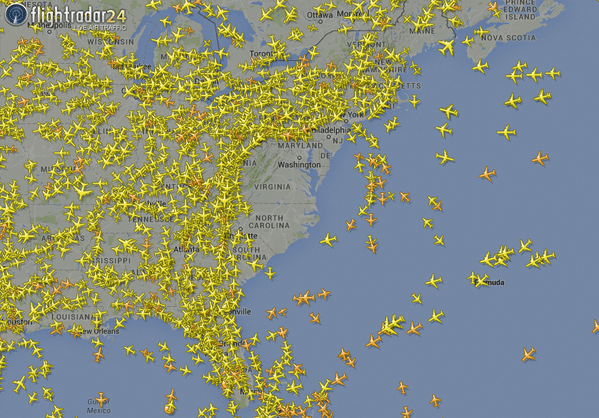UPDATE: [Avionics Today 08-18-2015] – Please note, the FAA has released an updated statement indicating that it has discovered a recent software upgrade associated with the En Route Automation Modernization (ERAM) system was connected to the cause of the flight delays that mostly impacted air traffic throughout the east coast on Saturday, Aug. 15. Here is the FAA’s latest statement released on the incident:
FAA: “A new function in the latest ERAM software upgrade provided individual controllers with the ability to set up a customized window of frequently referenced data. This information was supposed to be completely removed from the system as controllers deleted it.
However, as controllers adjusted their unique settings, those changes remained in memory until the storage limit was filled. This consumed processing power needed for the successful operation of the overall system.
By temporarily suspending the use of this function, we have eliminated the possibility of this particular issue from occurring again. The FAA is working with Lockheed on a permanent solution and the company is closely examining why the issue was not identified during testing.”
[Avionics Today 08-17-2015] The FAA is looking into a recent software upgrade implemented at the Washington Air Route Traffic Control Center (ZDC) in Leesburg, Va., as the possible source of computer automation problems that prompted the delay or cancellation of hundreds of flights on Saturday, Aug. 15. While the automation problem originated at ZDC, the issue created a ripple effect throughout the National Airspace System (NAS), disrupting flights until the automation system came back online that afternoon.
 |
| Image of diverted flight paths during yesterday’s ATC computer glitch at ZDC. Photo: FlightRadar24 |
According to a statement released on the agency’s Facebook page, preliminary information about flight activity resulting from the incident indicated that the automation problem caused 492 related delays and 476 cancellations.
“The FAA reduced the arrival and departure rates in the area from 11 a.m. to 4 p.m. for safety reasons. That resulted in about 70 percent of the average normal Saturday traffic at [Baltimore Washington International Airport] BWI, 72 percent at [Reagan National Airport] DCA, and 88 percent at [Dulles International Airport] IAD. The FAA is continuing to diagnose the cause of yesterday’s problem, and has not seen a reoccurrence of the original issues,” the agency said.
The two major airports serving the Washington D.C. region, Reagan National and Dulles International, were particularly impacted by the automation problem. Airports serving the New York area also suffered major delays. Flights with routes that normally traverse the Washington D.C. region airspace, such as JetBlue 927 between Newark and Orlando, were re-routed out over the Atlantic Ocean and other areas, according to live air traffic radar tracking data from FlightRadar24, an Internet-based flight tracking application.
A representative for American Airlines, the carrier with the largest presence at Reagan National, said an estimated 40 percent of their flights were cancelled or delayed on Saturday.
“FAA instituted a low-altitude flight plan for flights under 10,000 feet so we had significant delays and/or cancellations at Regan International and Dulles International airports,” Kimberly Gibbs, a spokesperson for Metropolitan Washington Airports Authority (MWAA) told Avionics Magazine. “As the afternoon progressed, their system was able to come back online and airlines worked with FAA to recoup those delays and cancelled flights. On Sunday we had a pretty busy travel day but normal operations at both of our airports, and as of today operations still remain normal.”
The Washington Air Traffic Control (ATC) center in Leesburg, Va. is among the 24 air traffic facilities within the NAS tasked with managing high altitude aircraft, or those flying above 20,000 feet. Below that altitude, traffic is managed by controllers located at Terminal Radar Approach Control Facilities (TRACONS), none of which in the Washington D.C. area were impacted by the automation problem confined to ZDC.